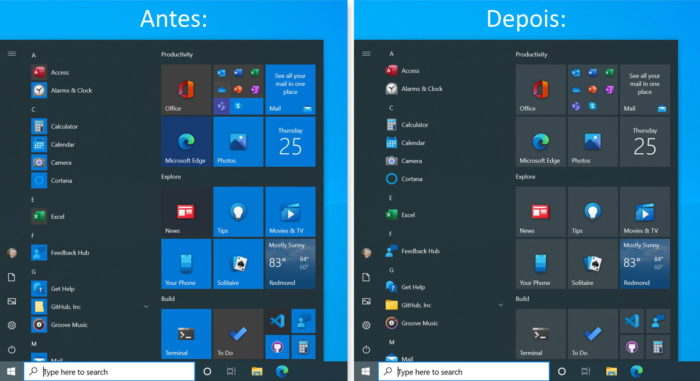To add a virtual desktop, open the new Task View pane by clicking the Task View button (two overlapping rectangles) on the taskbar or pressing the Windows Key + Tab. Click New Desktop to add a virtual desktop in the Task View pane.
How do I use multiple desktops in Windows 10?
Switch between desktops: Open the Task View window and click the desktop you want to switch to. You can quickly switch between desktops with the keyboard shortcuts Windows Key + Ctrl + Left Arrow and Windows Key + Ctrl + Right Arrow.
How do I use multiple desktops?
You can switch between virtual desktops using the keyboard shortcuts Ctrl+Win+Left and Ctrl+Win+Right. You can also visualize all your open desktops using Task View – click the icon on the taskbar or press Win+Tab. This gives you a handy overview of everything available on your PC from all your desktops.
How do I open a virtual desktop?
To add a new virtual desktop from the keyboard, press Windows+Ctrl+D or Windows+Tab to reopen Task View. Use Tab and the arrow keys to select “New Desktop” and press Enter. A new virtual desktop will appear.
What is the purpose of a virtual desktop?
What is the purpose of a virtual desktop? Users can access their desktops and applications anywhere on any endpoint device with a virtual desktop. At the same time, IT organizations can deploy and manage these desktops from a centrally located data center.
What is the difference between a remote desktop and a virtual desktop?
For starters, virtual desktops provide end users with a familiar experience. Users who log into a virtual desktop usually interact with desktop operating systems such as Windows 7 or Windows 8. In contrast, remote desktop environments sometimes force users to use a server desktop.
Is Windows 10 Slowing Down Multiple Desktops?
There doesn’t seem to be a limit to the number of desktops you can create. But just like browser tabs, having multiple desktops can slow down your system. That desktop becomes active when you click on a desktop in Task View.
Does Windows 10 Allow Multiple Users?
Windows 10 makes it easy for multiple people to share the same PC. To do this, create separate accounts for each person using the computer. Each person gets their storage, applications, desktops, settings, etc. First, you need the email address of the person you want to create an account with.
How do I delete multiple desktops in Windows 10?
No problem. Click the Task View button in your taskbar. You can also use the Windows Key + Tab shortcut on your keyboard or swipe from the left side of your touchscreen with one finger. Move your cursor over the desktop you want to delete. Click the X in the top right corner of the desktop icon.
What can I use multiple desktops for?
Multiple desktops are great for keeping unrelated, ongoing projects organized or quickly switching desktops for a meeting. Create various desktops: Select Task View > New Desktop on the taskbar. Open the apps you want to use on that desktop.
How do I switch between desktop and VDI?
On a Windows computer: Double-click the toolbar at the top of the screen, labeled the VDI build, which will shrink the virtual desktop window so you can access your computer. Then you can drag the virtual desktop window of the VDI to the desired size.
When should you use virtual desktops?
6 Reasons Why You Should Use Virtual Desktops Increased Cyber Security. With the increase in cybersecurity incidents on SaaS, there is a shift towards virtual desktops. Cloud computing connects your business. Reduce IT costs by eliminating infrastructure. Employee versatility. Multiple ways to set it up. Keeps everything in the back end.
Is virtual desktop free?
Download Virtual Desktop Streamer. It’s free and made by those who made the Virtual Desktop app you bought on Quest or Quest 2. This app is required to stream PC content to your headset via Wi-Fi.
How does a virtual desktop work?
A virtual desktop gives employees remote access to their work computers. The operating system and personal data are stored on a network that can be located anywhere using unique credentials rather than locally on the PC or other computing devices.
What is the best virtual desktop?
Top 11 best virtual desktop solutions: free cloud desktop comparison of online virtual hosted desktops. #1) V2 Cloud. #2) Amazon workspaces. #3) Microsoft Azure. #4) VMware Horizon cloud. #5) Cloudize Desktop-as-a-Service. #6) dinClouddinWorkspace. #7) Citrix virtual apps and desktops.
What are the main features of virtual desktops?
By Amy McCaughey What Are the Key Features for Hosted Virtual Desktops? Mobility is inherent in the concept of a hosted virtual desktop. Your employees can work anywhere. Hosted virtual desktop increases security. Manage Portal—better uptime and redundancy. Improved performance.
What is the purpose of the Windows 10 virtual desktop?
With virtual desktops, Windows 10 allows you to create multiple separate desktops, each displaying different open windows and apps. A simple use for this might be to keep work separate from personal stuff.
Is virtual desktop secure?
Virtual desktop infrastructure can make your desktops more secure or less secure. Storing data on VDI servers in the data center is more secure than storing it locally on the user’s endpoint, and administrators have more control over desktop and app distribution.
Is the desktop a virtual machine everywhere?
Desktop Anywhere is a secure, remotely accessible, virtualized desktop — a groundbreaking capability in the Air Force that allows users to securely access critical apps and data via their PC (Windows and Mac) worldwide using only a commercial Internet connection and a CAC.
What is the difference between Terminal Services and Remote Desktops?
External desktop. The main difference is that terminal servers run on a Windows Server. Thus, the user is provided a Windows Server desktop. Conversely, remote desktop environments typically have operating systems like Windows 10 within virtual machines (VM).
